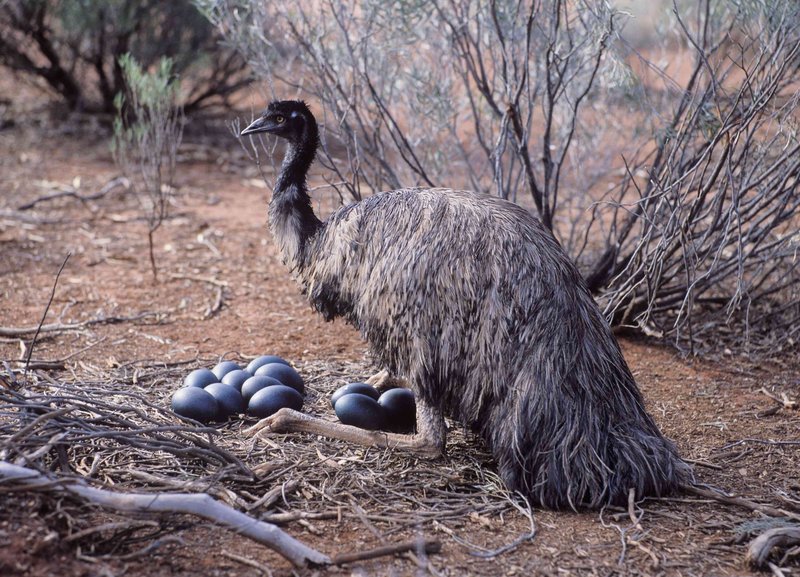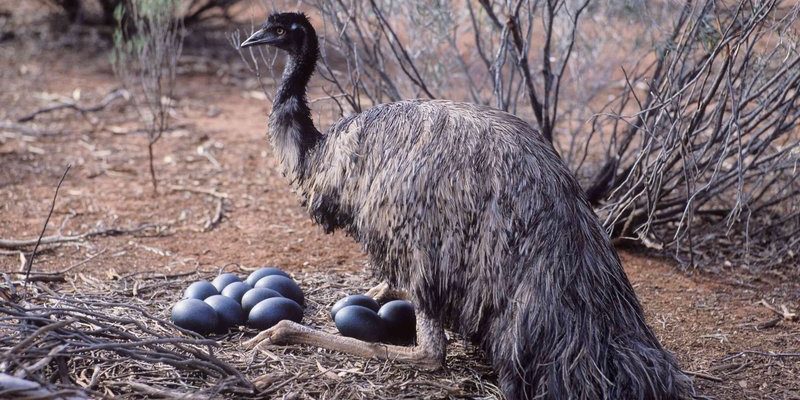
Emus are not just survivors; they’ve evolved unique traits that enable them to navigate their world with ease. So, how do these large, fluffy birds manage to endure high temperatures, limited food, and unpredictable weather? Let’s dive into their secrets and uncover the fascinating ways emus survive and thrive.
Adaptations to Extreme Temperatures
Emus are built for a tough life. One of their coolest features is their feather structure. Unlike other birds, emu feathers are not just for show; they have a unique design that helps regulate their body temperature. The feathers trap air, providing insulation against both the scorching heat of the day and the chilly nights. It’s like wearing a cozy, breathable jacket that adapts to the weather. As a result, emus can stay cool when it’s hot and warm when it’s cold.
But that’s not all! Emus have a special behavior called shade seeking. During the hottest parts of the day, these birds look for shade under trees or bushes. They know how to conserve their energy. By staying cool, they avoid overheating, which is crucial for their survival. Honestly, it’s like they’ve got a built-in survival manual!
Finding Water in a Parched Landscape
You might think that living in arid regions means water is hard to come by. For emus, it’s a challenge they take in stride. They’re pretty clever when it comes to sourcing water. Emus can go for long periods without drinking. They get most of the moisture they need from the food they eat, such as fruits and seeds. Imagine snacking on a juicy piece of fruit instead of chugging a full glass of water—pretty smart, right?
During the dry times, emus have been known to dig for water underground. They’ll scratch at the soil and sometimes even create small puddles. This behavior shows just how resourceful they can be. Like little detectives on a mission, they’re always on the lookout for their next water source, proving that survival often requires creativity.
Diverse Diet for Nutritional Needs
What do emus eat? That’s a great question! These birds have an incredibly varied diet, which is a big part of how they survive in harsh environments. Emus munch on everything from grasses and seeds to fruits and insects. This varied diet allows them to adapt to what’s available, so they’re not picky eaters. It’s like having a buffet at their disposal!
They also have a unique way of eating. Emus often swallow small stones and pebbles, which help grind up food in their gizzards. This is essential because their plant-based diet can be tough to digest. By doing this, they maximize their nutrient intake, ensuring they stay healthy and energized.
Another interesting fact? Emus can travel several kilometers in search of food. Their long legs help them cover vast distances. This means they can find whatever they need, even when it’s scarce. Talk about a proactive approach to dining!
Incredible Social Behavior
Emus are social creatures, often forming small groups or flocks. This behavior is not just for companionship; it actually helps them survive. By sticking together, they can warn each other of potential dangers like predators. It’s like having a built-in support network. When one emu spots a threat, it alerts the others, and they can all take off together.
Socializing also plays a part in finding food. Emus can forage more effectively as a group. They share information about food sources and water, ensuring that everyone gets enough to eat. This community spirit is crucial in tough times, showing just how important it is to work together in the wild.
Adaptation to Seasonal Changes
Australia’s environments can change dramatically with the seasons. Emus are tuned in to these changes, allowing them to adapt their behavior accordingly. For instance, during the wet season, they take advantage of the abundance of food and water. They tend to breed during this time, ensuring their young have the best chances of survival.
In the dry season, emus become more nomadic. They’ll travel to find food and water, often covering large distances. This adaptation is key to survival; being able to move to different areas increases their chances of finding what they need. It’s like they’re setting out on little adventures, making the most of the changing landscape around them.
Conservation and Human Impact
While emus have evolved to thrive in harsh environments, human activities pose challenges to their survival. Habitat destruction, urban development, and climate change are significant threats. Emus need space to roam and find food, and as their habitats shrink, their survival becomes increasingly difficult.
Thankfully, there are conservation efforts aimed at protecting emus. These initiatives focus on preserving their habitats and creating safe environments for them. As people become more aware of the importance of these birds, actions can be taken to ensure they continue to thrive. After all, preserving biodiversity is essential for a balanced ecosystem.
The Importance of Emus in Their Ecosystem
Emus play a crucial role in their ecosystems. They help disperse seeds as they move around, which promotes plant growth and contributes to the health of their environment. By spreading seeds, they ensure that new plants can grow, which in turn supports other wildlife. It’s a cycle of life that’s incredibly important.
Moreover, emus are a part of the food chain. They serve as prey for larger predators, keeping the balance in their habitats. Every creature plays a role, and emus are no exception. Protecting them is not just about saving a bird; it’s about maintaining the health of the entire ecosystem.
In conclusion, emus are astonishing survivors in harsh environments. Their adaptations, resourcefulness, and social behavior showcase the wonder of nature. By understanding how they thrive, we can appreciate the resilience of wildlife and the importance of protecting their habitats. So the next time you see an emu, remember that it’s not just a bird; it’s a symbol of survival and adaptability in one of the toughest places on Earth.

